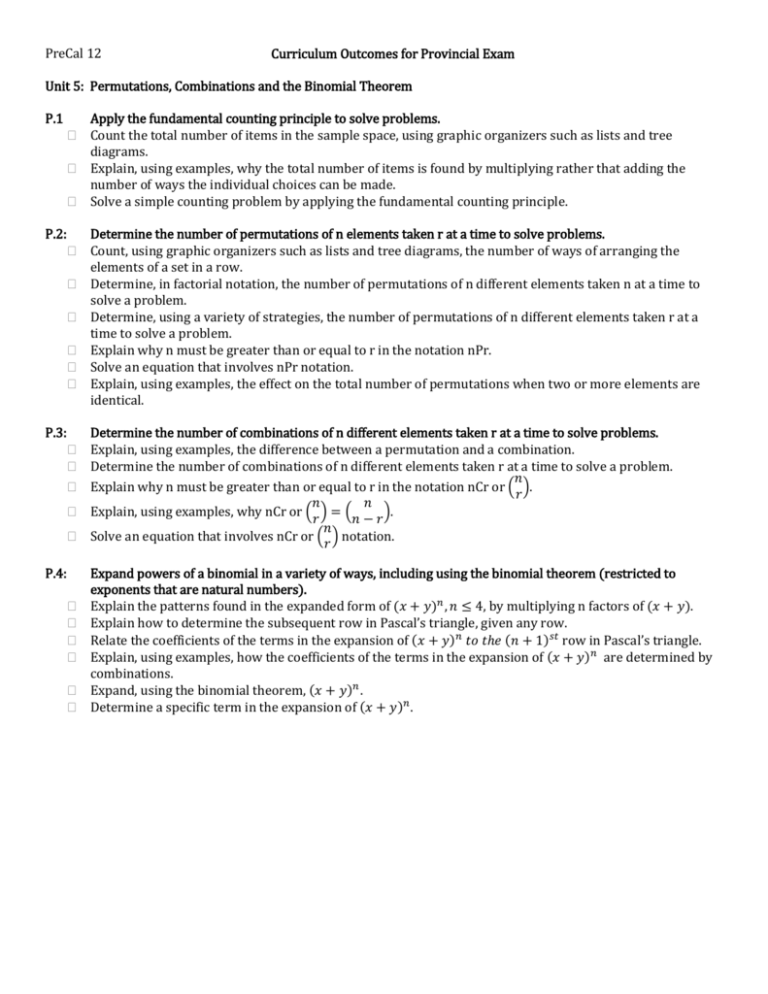PreCal 12 Curriculum Outcomes for Provincial Exam Unit 5
advertisement

PreCal 12 Curriculum Outcomes for Provincial Exam Unit 5: Permutations, Combinations and the Binomial Theorem P.1 P.2: P.3: P.4: Apply the fundamental counting principle to solve problems. Count the total number of items in the sample space, using graphic organizers such as lists and tree diagrams. Explain, using examples, why the total number of items is found by multiplying rather that adding the number of ways the individual choices can be made. Solve a simple counting problem by applying the fundamental counting principle. Determine the number of permutations of n elements taken r at a time to solve problems. Count, using graphic organizers such as lists and tree diagrams, the number of ways of arranging the elements of a set in a row. Determine, in factorial notation, the number of permutations of n different elements taken n at a time to solve a problem. Determine, using a variety of strategies, the number of permutations of n different elements taken r at a time to solve a problem. Explain why n must be greater than or equal to r in the notation nPr. Solve an equation that involves nPr notation. Explain, using examples, the effect on the total number of permutations when two or more elements are identical. Determine the number of combinations of n different elements taken r at a time to solve problems. Explain, using examples, the difference between a permutation and a combination. Determine the number of combinations of n different elements taken r at a time to solve a problem. 𝑛 Explain why n must be greater than or equal to r in the notation nCr or ( ). 𝑟 𝑛 𝑛 Explain, using examples, why nCr or ( ) = ( ). 𝑟 𝑛−𝑟 𝑛 Solve an equation that involves nCr or ( ) notation. 𝑟 Expand powers of a binomial in a variety of ways, including using the binomial theorem (restricted to exponents that are natural numbers). Explain the patterns found in the expanded form of (𝑥 + 𝑦)𝑛 , 𝑛 ≤ 4, by multiplying n factors of (𝑥 + 𝑦). Explain how to determine the subsequent row in Pascal’s triangle, given any row. Relate the coefficients of the terms in the expansion of (𝑥 + 𝑦)𝑛 𝑡𝑜 𝑡ℎ𝑒 (𝑛 + 1)𝑠𝑡 row in Pascal’s triangle. Explain, using examples, how the coefficients of the terms in the expansion of (𝑥 + 𝑦)𝑛 are determined by combinations. Expand, using the binomial theorem, (𝑥 + 𝑦)𝑛 . Determine a specific term in the expansion of (𝑥 + 𝑦)𝑛 .











